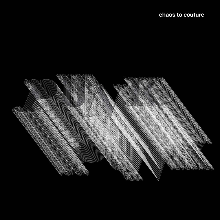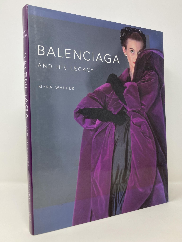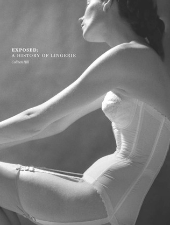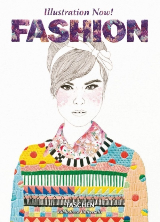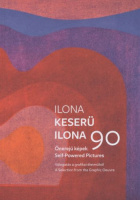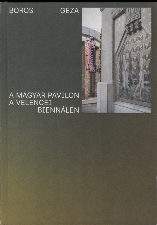Könyvajánlók
Exhibiting Antonio Canova : display and the transformation of sculptural theory
Christina Ferando
Exhibiting Antonio Canova: Display and the Transformation of Sculptural Theory argues that the display of Canova’s sculptures in the late eighteenth and early nineteenth centuries acted as a catalyst for discourse across a broad range of subjects. By enshrining his marble figures alongside plaster casts of ancient works, bathing them in candlelight, staining and waxing their surfaces, and even setting them in motion on rotating bases, Canova engaged viewers intellectually, physically, and emotionally. These displays inspired discussions on topics as diverse as originality and artistic production, the association between the sculptural surface, flesh, and anatomy, the relationship between painting and sculpture, and the role of public museums. Beholders’ discussions also shaped the legacy of important sculptural theories. They helped usher in their modern definitions and created the lenses through which we experience and interpret works of art, establishing modern attitudes not just towards sculpture, but towards cultural patrimony in general.
tovább >>>
Shocking! : the art and fashion of Elsa Schiaparelli
Dilys E. Blum
Elsa Schiaparelli (1890–1973) was the premier style arbiter of the 1930s—a favorite designer of women who made the best-dressed list, of female sports heroes, and of film and theater actresses. This comprehensive book accompanies the first major American retrospective of the work of this startling, groundbreaking Paris fashion designer.
Shocking! explores the Italian-born couturière’s career from its Modernist beginnings in the 1920s and its connections with Surrealism to the upheavals caused by war, the business struggles in the years that followed, and the closing of her salon in 1954. Author Dilys E. Blum examines in detail for the first time Schiaparelli’s impact on and relationship with the American fashion industry, which many considered the foundation of her great success. Her appeal stemmed in large part from the newness of her “architectural” silhouettes and the excitement generated by her many innovations. She used the latest materials in unconventional and unexpected ways, choosing “tree-bark” textured rayon for an evening gown, creating fastenings from boot clips, and positioning colorful plastic zippers to be seen rather than concealed. After 1935 Schiaparelli’s collections took on a new identity from themes developed from her own acerbic and quick-witted observations of the world around her. She also drew inspiration from her close relationship with the Paris avant-garde; she posed for Man Ray and collaborated with such artists as Jean Cocteau, Salvador Dalí, Alberto Giacometti, and Meret Oppenheim for designs of clothing, fabric, embroidery, jewelry, and advertising...
tovább >>>
Punk: chaos to couture
Andrew Bolton
PUNK: Chaos to Couture considers the vitality of the punk aesthetic and its impact on high fashion, from the do-it-yourself ethos of punk's originators to the perfection defined by its couture descendants.
"Punk has had an incendiary influence on fashion. Although punk's democracy stands in opposition to fashion's autocracy, designers continue to appropriate punk's visual vocabulary to capture its youthful rebelliousness and aggressive forcefulness." Andrew Bolton
"Punk was like nothing anybody had seen before, like nothing. Punk was fearless. Utterly fearless."John Lydon (Johnny Rotten)
"Punk was about succeeding without any skills except honesty. Honesty isn't easy though. That's where the art, unironically, comes in." Richard Hell
"The look was at once decadent and puritan: a deliberate confusion of symbols, a living collage that served as both symptom and solution, as both windup and warning." Jon Savage
tovább >>>
Balenciaga and his legacy : haute couture from the Texas Fashion Collection
Myra Walker
Born in 1895 in a remote fishing village in Spain, Crist bal Balenciaga
learned sewing and tailoring at his mother’s knee. By 1937, the talented
and persistent young man had opened his own design salon in Paris, and
in the years following World War II he emerged as a designer to be
reckoned with in the world of haute couture. The House of
Balenciaga grew to serve an international clientele from locations in
Paris, Madrid, and Barcelona, and from 1937 to its closing in 1968
created some of the most outstanding and innovative examples of French
and Spanish haute couture of the era.
This beautifully illustrated
book presents nearly 70 Balenciaga creations for day and evening, along
with 25 hats, from the extraordinary archives of the Texas Fashion
Collection of the University of North Texas. The book also includes
striking fashion photographs from Vogue magazine and Harper’s Bazaar
by Richard Avedon and Louise Dahl-Wolfe. A series of essays explores
many aspects of the designer’s work, among them his contributions to
fashion history; connections with such other prominent designers as
Hubert de Givenchy and Oscar de la Renta; important relationships with
Neiman Marcus and fashion buyer Bert de Winter in Dallas; and his close
friend and client Claudia Heard de Osborne.
tovább >>>
Exposed : a history of lingerie
Colleen Hill
A beautifully illustrated overview of women’s
undergarments from the 18th century to the present, with a focus on
history, fashion, and craftsmanship
Lingerie is a subject of
enduring fascination. As the final barrier to the fully nude body, it is
simultaneously modest and erotic. This compelling and eye-catching
publication surveys lingerie from the mid-18th century to the present,
covering a broad range of foundation garments, intimate apparel, and
lounging clothes—from bras and corsets to slips, peignoirs, and tea
gowns. All pieces are gorgeously illustrated in color...
tovább >>>
Illustration now! Fashion
Julius Wiedemann
Every dress begins with a drawing, every skirt with a sketch.
Illustration is an integral element of fashion design; a starting point
for creation, a means of expressing the moods, emotions, and experiences
carried by garments—yet is too often overlooked. Through stark tones
and serendipitous smudges, fashion illustrators breathe life into trends
and seasons.
In this new, compact edition, you’ll find works from 90 contemporary
artists located all around the world, including Ruben Toledo, Aurore de
La Morinerie, Bil Donovan, Tanya Ling, and Jean-Philippe Delhomme.
Following an introduction by illustration expert Steven Heller, art and
fashion historian Adelheid Rasche provides an in-depth exploration of
clothing illustration, beginning in the 17th century and stretching
forward to today...
tovább >>>
Keserü Ilona 90 : önerejű képek : válogatás a grafikai életműből
Keserü Ilona, Kossuth- és Munkácsy-díjas festőművész és grafikus, a kortárs magyar művészet megkerülhetetlen alakja, 2023. november 29-én ünnepli 90. születésnapját. Ebből az alkalomból a Magyar Nemzeti Galéria a grafikai életműből – papíralapú műveiből, rajzaiból és sokszorosított grafikáiból – álló tárlattal tiszteleg a művész előtt. A válogatás több mint hét évtized papírmunkáit, a Martyn Ferencnél töltött tanulóévektől kezdve a vibráló szitanyomatokon át a lágy vonalú tusrajzokig ívelő pályát mutatja be. A kiállításon a művész budapesti műterméből válogatott 64 mű látható, köztük olyan alkotások is, amelyek még sosem szerepeltek korábban a nagyközönség előtt...
tovább >>>
A Magyar Pavilon a Velencei Biennálén
Boros Géza
Magyarország a kezdetektől, 1895 óta vesz részt a Velencei Biennálén. Az önálló magyar nemzeti pavilon – az olasz és a belga pavilon után – a harmadikként épült meg a Giardiniben. Az 1909-ben átadott szecessziós épületet Maróti Géza (1875–1941) építész, szobrász- és iparművész tervezte, aki a megbízást az 1906-os milánói világkiállítás magyar pavilonja sikerének köszönhetően nyerte el.
A századelő Gesamtkunstwerk-törekvéseinek megfelelően a velencei kétszintes épület gazdag képző- és iparművészeti díszítést kapott. Díszítőrészleteit a Gödöllői Művésztelep művészei készítették: a mozaikokat Körösfői-Kriesch Aladár (1863–1920), az üvegablakokat pedig Nagy Sándor (1869–1950) tervezte. A bejárati fogadóteret Telcs Ede szobrászművész domborművei díszítették. A tető mázas cserepei, valamint a bejárat eozinmázas kerámiái a Zsolnay-gyárban készültek, az üvegablakokat és a mozaikokat Róth Miksa műhelye kivitelezte. A ház külső díszítése, ikonográfiai programja a hun-magyar közös múltat felidéző történeti szimbolika jegyében születtek...
tovább >>>
Rei Kawakubo: Comme des garçons : art of the in-between
Rei Kawakubo
The Costume Institute's spring 2017 exhibition examines the work of fashion designer Rei Kawakubo, known for her avant-garde designs and ability to challenge conventional notions of beauty, good taste, and fashionability. The thematic show features approximately 140 examples of Kawakubo's womenswear for Comme des Garçons dating from the early 1980s to her most recent collection, many with heads and wigs created and styled by Julien d'Ys...
tovább >>>
Vogue : fantasy & fashion
[ed. by Laird Borrelli-Persson]
With more than 300 color photographs, Vogue: Fantasy & Fashionis a dream book of empowering and fantastical fashion narratives—from Brothers Grimm to futuristic scenarios—told in the culture magazine’s inimitable style...
tovább >>>
Charles James : beyond fashion
Harold Koda and Jan Glier Reeder
The inaugural exhibition of the newly renovated Costume Institute examines the career of legendary twentieth-century Anglo-American couturier Charles James (1906–1978), and is presented in two locations—exhibition galleries on the Museum's first floor and The Costume Institute's Anna Wintour Costume Center on the ground floor. It explores James' design process, specifically his use of sculptural, scientific, and mathematical approaches to construct revolutionary ball gowns and innovative tailoring that continue to influence designers today. The retrospective features approximately sixty-five of the most notable designs James produced over the course of his career, from the 1920s until his death in 1978....
tovább >>>
Magyar menyasszony : kiállítási katalógus : [2023. december 14. - 2024. augusztus 25., Magyar Nemzeti Múzeum, Budapest]
Az emberi élet sorsfordító eseményei közül kiemelkedik a két felnőtt
közös útjának kezdetét jelentő házasságkötés. Az esküvő, a lakodalom
eseménysora ezt a fontos átmenetet kísérte és kíséri mind a mai napig,
miközben a házasulókkal szembeni társadalmi elvárások az elmúlt
évszázadokban jelentős mértékben megváltoztak.
A Magyar Menyasszony című kiállítás – melynek hű lenyomata a
számos gyönyörű fényképpel kísért katalógus – az elmúlt ötszáz évre
visszatekintve mutat be tárgyakat és történeteket, amelyek a
házasságkötéshez és az odáig vezető úthoz kapcsolódnak. A kiállításnak
fontos előzménye és kísérője egy több éve működő közösségi projekt. ..
tovább >>>


